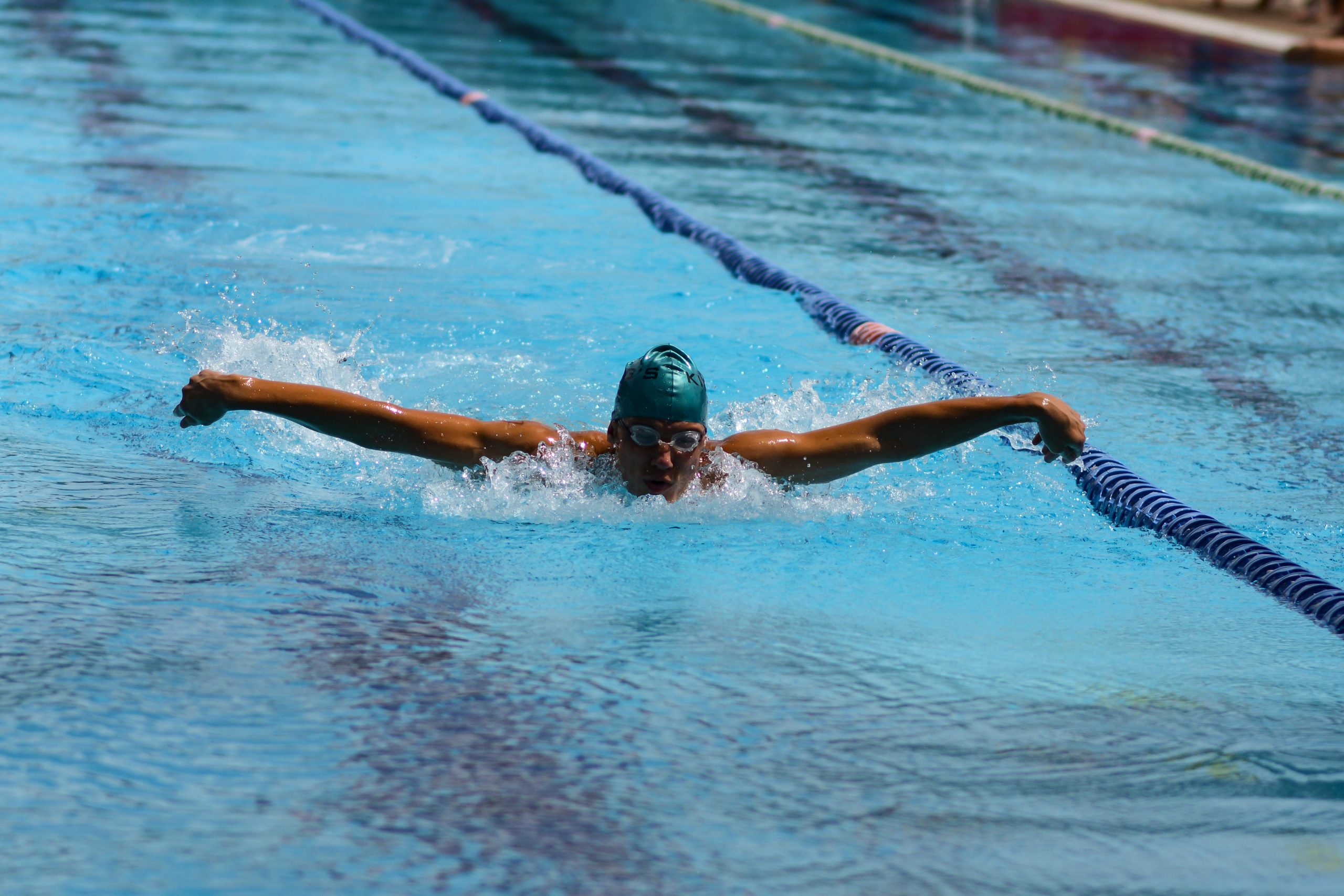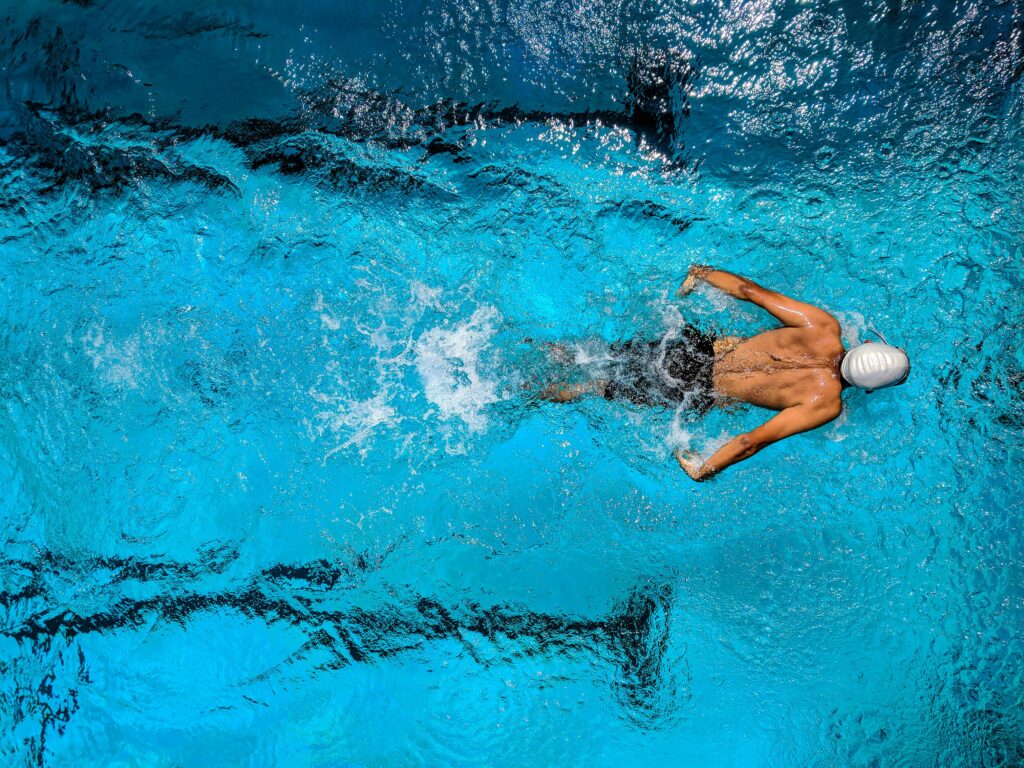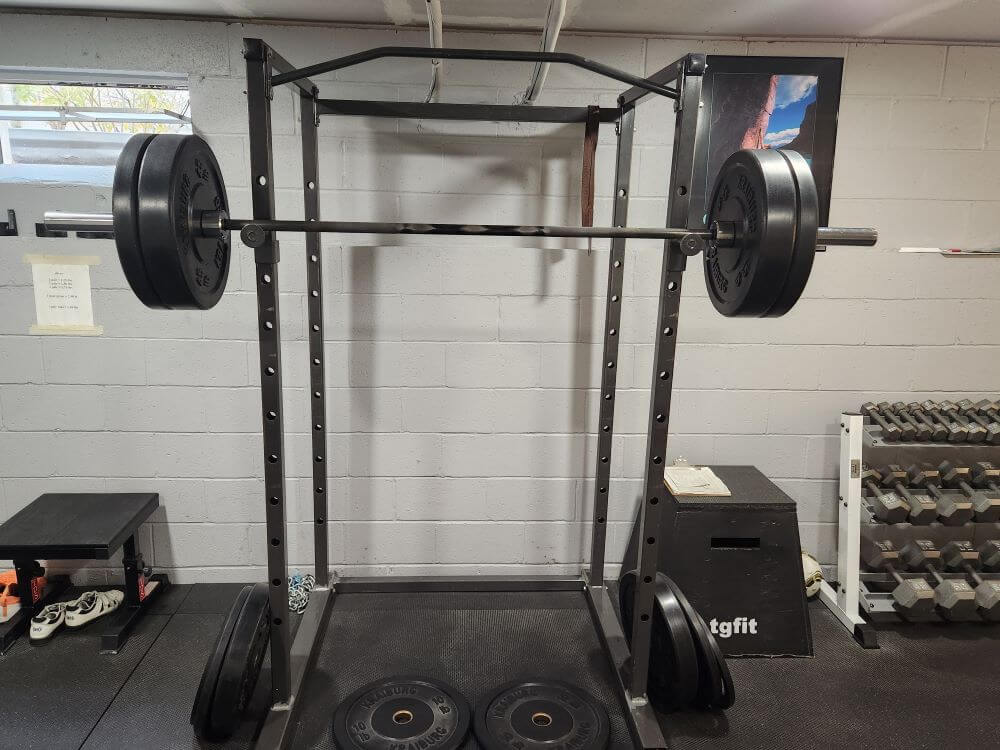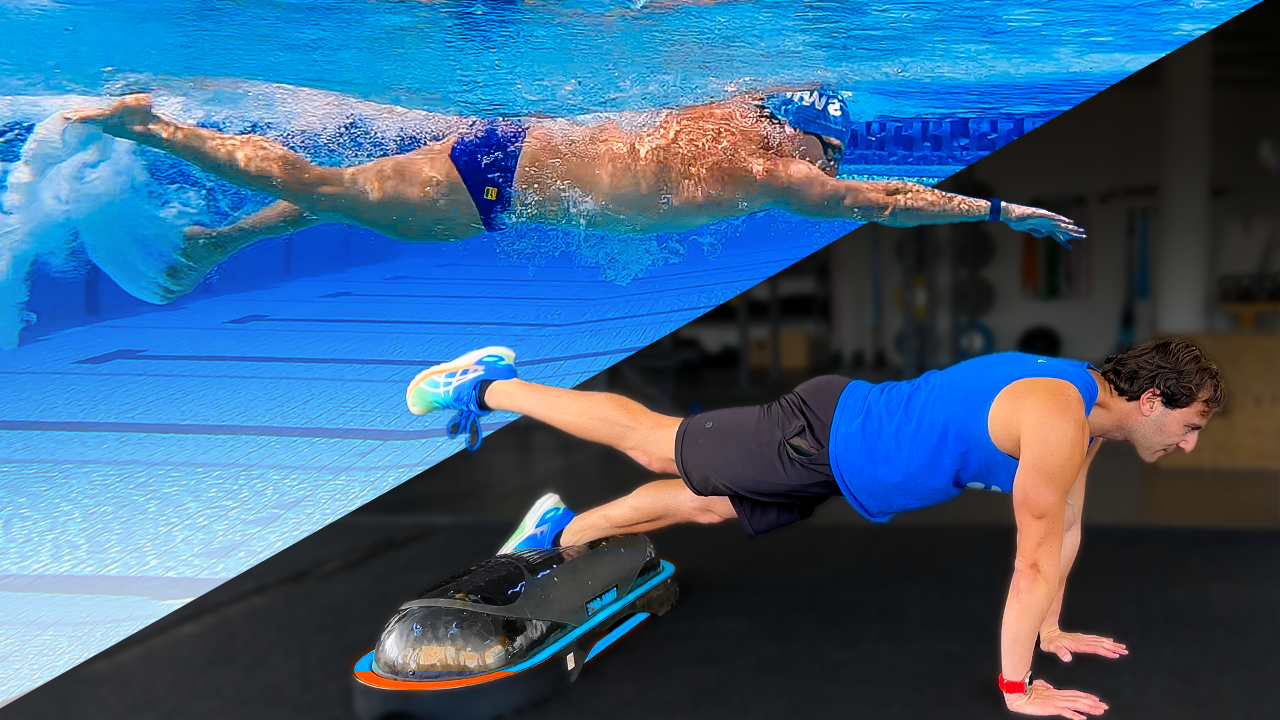Swimming weight training workouts enhance strength and improve performance in the water. They target muscle groups essential for swimmers, such as the shoulders, back, legs, and core.
Engaging in weight training workouts is integral for swimmers who wish to build endurance, power, and efficiency in their strokes. Crafted specifically for aquatic athletes, these workouts focus on movements that mimic swimming patterns and promote overall muscular balance. By including a mix of dryland exercises—like pull-ups, squat jumps, and medicine ball throws—swimmers can develop a more powerful kick and stroke.
Optimal results are usually seen when these workouts are consistently incorporated into a swimmer’s training regimen, complementing their pool sessions. It’s vital to align weight training intensity and volume with swimmers’ competition schedules to ensure peak performance during meets.

Credit: blog.myswimpro.com
Diving Into The Benefits Of Weight Training For Swimmers
Swimmers seeking the edge often turn to weight training. It’s more than building muscle.
It’s about tailored gains that translate into pool performance. Let’s explore why weight training is a swimmer’s ally.
Building Swim-specific Strength
Every stroke in the pool demands distinct muscle groups. Weight training can target these muscles. You’ll achieve strength that mirrors your swimming motions. Think about a swimmer’s pull. Stronger lats and shoulders mean more forceful strokes. This training can include:
-
- Lat pulldowns for a stronger back
- Dumbbell flys for chest endurance
- Squats for leg power, vital for kick-starts and turns
Enhancing Power And Speed In The Water
Quick sprints and sudden bursts are part of competitive swimming. Weight training is perfect for boosting these abilities. Fast-twitch muscle fibres come alive with the right exercises. They’re the secret behind explosive starts and power moves in the pool. Consider adding these to your regimen:
-
- Deadlifts for overall power
- Clean and press for explosive upper-body strength
- Box jumps for leg speed and agility
Anatomy Of A Swimmer’s Weight Training Routine
Effective weight training routines help swimmers build power and speed. Strong muscles break through the water’s resistance. Balanced routines target key muscle groups. Swimmers achieve better performance with tailored workouts. Let’s explore the components of a swimmer’s weight training routine.
Balancing Muscular Strength And Endurance
Swimmers need both strength and endurance in their muscles. Heavy lifts increase strength. Lighter weights with more reps build endurance. Here’s how to balance both:
- Begin with compound movements like squats and deadlifts.
- Follow with isolated exercises for targeted muscle development.
- Mix low-rep, high-weight sets for strength.
- Add high-rep, low-weight sets for endurance.
Prioritizing Core Stability And Posture
Core strength is crucial in swimming. It improves stability and posture. Swimmers must train their core regularly. Here’s a core workout breakdown:
| Exercise | Reps | Sets |
|---|---|---|
| Planks | Hold for 30 seconds | 3 |
| Russian Twists | 15 per side | 3 |
| Leg Raises | 12 | 3 |
Include exercises that mimic swimming movements. Engage the whole core for better performance in water.
Crafting The Optimal Workout Schedule
Swimmers seeking peak performance must blend swimming drills with weight training. An optimal workout schedule balances both. It boosts strength without overtraining. Let’s break down how to integrate these crucial components effectively.
Integrating Weight Training With Swim Practice
Creating a synergistic routine enhances performance gains. Begin by aligning your swim and weight training sessions. Aim for a harmonious balance to prevent fatigue. Follow this simple plan:
- Early Week: Focus on heavy weights with low repetitions. Match this with lower intensity swim workouts.
- Mid-Week: Transition to moderate weight and swim efforts. Maintain a strong pace.
- Late Week: Dedicate these days to swim technique and endurance. Complement with lighter weight workouts.
Ensure at least 3 hours between weight and swim sessions. This helps muscles recover.
Rest And Recovery: Timing Is Key
Recovery is vital for muscular and aerobic development. Insert rest days strategically in your schedule. Here’s how:
- Plan complete rest days post-heavy training cycles.
- Allow for active recovery days. Include light swimming or yoga.
- Monitor your body’s signals closely. Tweak your routine for optimal rest.
Add rest to your routine. Sleep and nourishment are crucial as well. Aim for 7-9 hours of sleep each night. Eat balanced meals to fuel your training and recovery.
Key Exercises To Amplify Swimming Performance
Swimming requires more than just mastering strokes in the water. Dryland training with specific weightlifting routines can propel your swimming performance to new heights. Enhance strength, speed, and endurance by incorporating key exercises into your regimen. Let’s dive into these workouts and discover how they can accelerate your aquatic prowess.
Upper Body Powerhouses: Pulls And Rows
Strong arms and shoulders are crucial for powerful strokes. Pulls and rows target these areas, developing muscular endurance and strength. Implement these upper body titans to conquer the waves:
- Lat Pull-downs: Mimic the pull phase of swimming. They bolster your latissimus dorsi, increasing pull strength.
- Bent-over Rows: Engage your middle back. They sharpen your posture, improving stroke efficiency.
- Seated Cable Rows: Focus on your back muscles. They also cultivate better arm and shoulder coordination.
Try these lifts:
| Exercise | Sets | Reps |
|---|---|---|
| Lat Pull-Downs | 3 | 8-12 |
| Bent-over Rows | 4 | 6-10 |
| Seated Cable Rows | 3 | 8-12 |
Lower Body Drivers: Squats And Lunges
Leg strength fuels your kicks and turns. Squats and lunges are foundational moves for powerful legs. Include these to blaze through the pool:
- Squats: Build overall leg muscle. They provide the thrust needed for starts and turns.
- Lunges: Enhance balance and flexibility. They are vital for a stable and efficient kick.
Add these drills:
| Exercise | Sets | Reps |
|---|---|---|
| Squats | 3 | 8-12 |
| Lunges | 3 | 10-15 per leg |

Dryland Drills For Explosive Starts And Turns
Swimmers know that explosive starts and sharp turns make the difference between first and second place. Dryland drills are key to developing these skills without the pool. They strengthen muscles, improve reaction time, and boost overall agility. Here are some top drills to include in your training regimen.
Box Jumps And Plyometric Push-ups
Box jumps escalate lower body power. This leads to powerful dives and off-the-wall sprints. They should be done with care to avoid injury. Plyometric push-ups enhance upper body explosiveness, ideal for strong strokes and turns.
- Perform box jumps: Stand in front of a sturdy box with feet shoulder-width apart. Jump onto the box with both feet and land softly. Step back down and repeat.
- Execute plyometric push-ups: Start in the push-up position. Lower your body to the ground and then push up with force to lift your hands off the ground. Land gently and repeat.
Medicine Ball Throws And Core Twists
Medicine ball throws build strength in the arms and shoulders. They contribute to a powerful arm pull in the water. Core twists focus on the abdominal muscles, important for quick and seamless turns.
| Exercise | Description | Benefit |
|---|---|---|
| Medicine Ball Throws | Stand facing a wall, throw a medicine ball against it with both hands, catch and repeat. | Increases arm and shoulder power for stronger pulls. |
| Core Twists | Sit with your knees bent, hold the medicine ball, and twist your torso side to side. | Builds abdominal strength for faster turns. |
Remember to include these drills in your regular routine. They will help improve your performance in the water.
Navigating The Weights Room: Equipment Essentials
Entering the weights room can feel like stepping onto another planet, especially for swimmers. Picking the right tools is key to enhancing aquatic performance. This section will dive into the essentials. Let’s look at what equipment will best complement your swimming weight-training workouts!
Free Weights Vs. Machines: What’s Best For Swimmers?
Swimmers need power, strength, and fluidity in their movements. Free weights allow a range of motion similar to in-water movements. Machines offer support and targeted muscle training. Both have their place in a swimmer’s routine.
- Free Weights: Aid in improving balance and mimicking swim strokes.
- Machines: Useful for isolating muscles and building specific strength.
| Type | Benefits | Drawbacks |
|---|---|---|
| Free Weights | Range of motion, balance | Higher risk of injury without proper form |
| Machines | Isolation, targeted strength | Less functional movement patterns |
Utilizing Resistance Bands For Swim-specific Movements
Resistance bands are perfect for swimmers. They’re light, portable, and offer versatile resistance. They mimic the water’s resistance felt during swimming. This translates into better in-pool performance.
- Improve stroke technique: Bands replicate water resistance.
- Build strength: They target swim-specific muscles.
- Enhance flexibility: Useful for stretching and injury prevention.
Use bands for arm pulls, shoulder rotations, and core exercises. They are essential in a swimmer’s weight training toolkit.
Safety First: Proper Technique And Injury Prevention
Safety must always come first in any fitness routine, especially when combining swimming with weight training. To boost performance and prevent injuries, understanding and applying proper techniques is vital.
Avoiding Common Weightlifting Mistakes
Lifting weights can make swimmers powerful and agile. Mistakes in weightlifting can lead to injuries that could sideline you from both the pool and the gym. Here are some safety suggestions for you:
- Warm up properly before lifting to prepare your muscles.
- Start with lighter weights and increase gradually.
- Ensure you have good form to target the right muscles.
- Have a spotter if you’re lifting heavy weights.
- Give your muscles a break in between sets so they can heal.
- Pay attention to your body, and if you experience pain, stop.
The Role Of Flexibility And Mobility Exercises
Flexibility and mobility exercises enhance your range of motion. They are key for a swimmer’s performance and longevity in the sport. Incorporate these exercises:
- Static stretches post-workout to cool down muscles.
- Dynamic stretches before weight training to warm up.
- Yoga or Pilates sessions weekly to improve overall mobility.
- Regular foam rolling to release muscle tightness.
By making flexibility and mobility a regular part of your routine, you ensure muscles work together smoothly and reduce the risk of injury.

Measuring Progress: From The Gym To The Pool
As swimmers integrate weight training into their routine, tracking advancements becomes crucial. Observing improvements from the gym to the pool delivers concrete evidence of progress, energizing athletes to stay committed. This post explores how to set and measure objectives effectively, ensuring every lift and lap counts.
Setting Achieivable Training Goals
Clearly defined goals act as roadmaps for swimmers, steering workouts toward success. These goals ought to be Time-bound, Specific, Measurable, Achievable, and Relevant, or SMART goals. Here’s how to tailor them for the pool:
- Specific: Target particular swimming strokes or muscle groups.
- Measurable: Use laps completed or time improvements as benchmarks.
- Achievable: Set realistic lift weights or swim times to reach gradually.
- Relevant: Choose exercises that enhance swimming performance.
- Time-bound: Give yourself deadlines for goals to create urgency.
Swim Time Reduction: Tracking The Impact Of Weight Training
To gauge the benefits of weight training in swimming, consistent monitoring is key. The table below illustrates how to record progress:
Additional rows can be added here
| Week | Weight Lifted | Swim Distance | Time Reduction |
|---|---|---|---|
| 1 | 50 lbs | 500 meters | N/A |
| 2 | 55 lbs | 500 meters | 2 seconds |
| 3 | 60 lbs | 500 meters | 4 seconds |
By logging weights lifted against swim times, swimmers can visualize improvements. As the weights increase, a trend in swim time reduction often emerges. Regular assessments confirm the direct impact of strength gains on swim performance.
Fueling For Muscle Gain And Swim Performance
Welcome to the definitive guide on Fueling for Muscle Gain and Swim Performance. When it comes to swimming weight training workouts, what you consume plays a pivotal role. Achieving peak performance and muscle growth requires the right nutrition strategy. Let’s dive into how to optimize your diet for strength gains and enhanced swim performance.
Nutrition Basics For Strength Training Swimmers
Understanding the fundamentals of nutrition is essential for swimmers who engage in strength training. Proper fueling supports muscle repair, growth, and overall health. Here’s a quick rundown of what swimmers should include in their diet:
- Proteins: Vital for muscle repair. Add fish, eggs, dairy products, and lean meats.
- Carbohydrates: Your main energy source. Opt for whole grains, fruits, and vegetables.
- Fats: Essential for hormone production. Pay attention to healthy fats found in avocados, nuts, and seeds.
Remember, timing matters. Eat a balanced meal two to three hours before training and a protein-rich snack afterwards.
Hydration And Supplements: Are They Necessary?
Hydration is a key component of athletic performance. Water consumption should be a constant goal for swimmers throughout the day. Maintaining fluid balance helps in workout recovery and prevents fatigue. For workouts exceeding an hour, consider a drink with electrolytes.
Supplements can play a role in a swimmer’s diet, but they are not a substitute for whole foods. Prioritize obtaining your nutrients from food. If you choose to supplement, consider:
| Supplement | Benefit |
|---|---|
| Whey Protein | Helps with muscle repair and growth after training. |
| Creatine | Can enhance strength and power output. |
| Branched-Chain Amino Acids (BCAA) | May aid in recovery and reduce exercise fatigue. |
Select supplements approved by reputable bodies like NSF or Informed-Sport to ensure quality and safety.
Elite Insights: Weight Training Routines Of Pro Swimmers
Dive into the muscle-toning, strength-building world of pro swimmers with this look at their weight-training workouts. Pro swimmers pair endless pool hours with targeted gym sessions. This powerful combo propels them to victory. It’s not just about the swim; it’s about the strength behind each stroke.
Case Studies Of Olympic Champions
Olympic champions are built with discipline and a splash of science.
| Athlete | Workout Focus | Key Exercises |
|---|---|---|
| Michael Phelps | Core Stability | Deadlifts, Squats, Pull-ups |
| Katie Ledecky | Endurance | Landmine Press, Battle Ropes |
| Caeleb Dressel | Explosive Power | Box Jumps, Medicine Ball Throws |
Each Olympic routine focuses on the swimmer’s event. It includes exercises to boost performance. For instance, sprinters like Caeleb Dressel train for explosive speed. On the other hand, long-distance swimmers like Katie Ledecky focus on endurance.
Adapting Pro Techniques For Amateur Swimmers
Not a pro swimmer? No worries. You can tweak these routines for your level. Gym workouts complement pool training. They increase strength and enhance swim technique. Let’s look at adapting pro workouts:
- Start Slow: Begin with lighter weights. Focus on form.
- Gradual Intensity: Increase weight and intensity over time.
- Balance: Combine strength with flexibility training.
- Rest: Ensure sufficient recovery between sessions.
Mimic a champion’s regimen. Mix these elements for a balanced approach. Remember, consistency is key. Regular training brings results.

Credit: www.swimmingworldmagazine.com
Frequently Asked Questions On Swimming Weight Training Workouts
Can You Do Swimming And Weight Training Together?
Yes, you can combine swimming and weight training. Balance both activities with adequate rest. Prioritize scheduling to prevent overtraining. Ensure proper nutrition for recovery and performance. Alternate between swimming and lifting to maximize benefits.
How Many Times A Week Should A Swimmers Lift Weights?
Swimmers should typically lift weights 2-3 times a week, focusing on overall strength and power, while allowing sufficient recovery time.
How Should Swimmers Train In The Gym?
Swimmers should focus on core, endurance, and strength training in the gym. Incorporate exercises like squats, deadlifts, and pull-ups. Balance workouts with swimming sessions, and prioritize rest for muscle recovery. Always stretch after gym training to maintain flexibility.
Does Swimming Build Muscle Like Weight Lifting?
Swimming can build muscle but not to the same extent as weight lifting. It’s a full-body workout that improves muscle tone and endurance rather than muscle size.
Conclusion
Embracing a swimming weight training regimen offers transformative results. It’s efficient, merging cardio with strength enhancement. By incorporating it into your routine, you pave the way for a fitter, stronger you. Dive into this workout fusion and witness your performance surge both in and out of the pool.
Let’s make waves with our fitness goals!

I am a health writer and blogger based in the US and UK. I have been with the health department for six years. And I give advice on various health problems and solutions. I have a lot of experience in health matters and I share it here.

